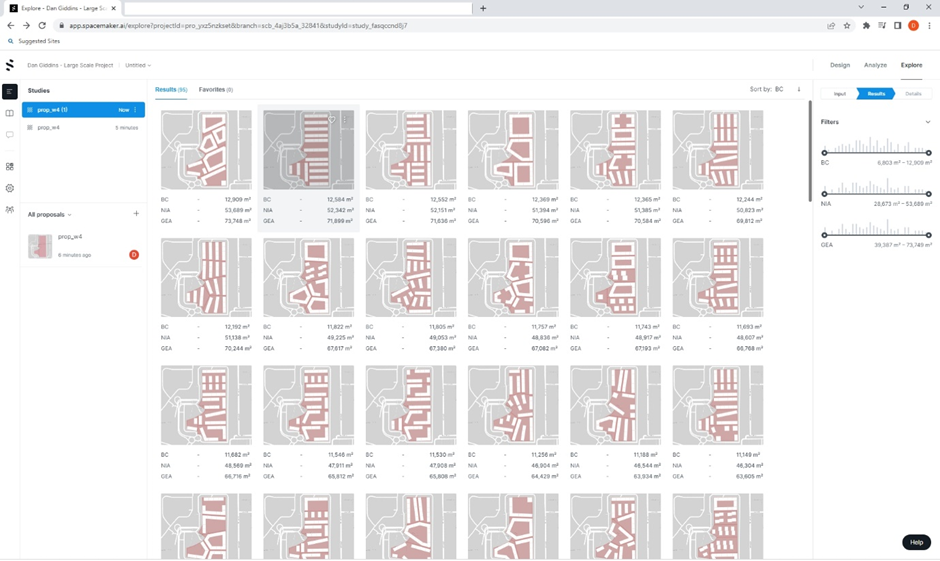The integration of AI technology with design apps is still in its infancy. 2022 saw massive strides in image generation from tools like Midjourney and DALL-E 2 and the render engine Veras being used time and time again to put a new spin on the out-of-the-box model that comes preinstalled with Revit.
Spacemaker, Autodesk's most recent AI tool for early urban design and analysis, takes a slightly different approach from an AI standpoint. Spacemaker, dubbed by its creators "AI-on-the-shoulders," helps urban designers, planners, and real estate developers rapidly mock up and assess various building configurations on a given site. To guide the designer towards the best solution, it can take into consideration factors like wind, solar, view quality, and a variety of other metrics.
SPACEMAKER AT A GLANCE
The tool itself is completely web based. Starting a project involves choosing a location from an interface resembling Google Earth. Your site is generated in a matter of seconds and is available for work to start after the choice is confirmed.
SITE STUDY
The ability of Spacemaker to automatically create 3D building designs based on a set of user-defined objectives and parameters is one of its key features. This can be referred to as the "broad brush" approach because it allows for the rapid generation of many configurations as well as their quick comparison and evaluation
Sample site in London – The ‘Explore’ mode
allows the fast generation of multiple site configurations. The red zone
denotes the proposed building plot.
In less than 30 seconds Spacemaker has generated 95 proposals for this site.
The building size (height, width, minimum building margin), specified layout formations, and number of stories were generated by Spacemaker using user inputs. Any of these studies may be chosen by the user as the foundation for a design going forward, and Spacemakers analysis capabilities may be used to further optimise the website.
SITE ANALYSIS
Solar analysis of one of the generated
proposals
Wind analysis of the generated proposal
REFINING GEOMETRY
The AI generation in Spacemaker acts as a ‘kick-off’ for a site proposal. The user can actively improve the design after selecting an iteration. This can be done natively in Spacemaker or the geometry and site can be exported to a third party application like Revit and imported back.
The kind of early schematic design that
Spacemaker is designed for is well suited to its user-friendly interface for
geometry editing. Those used to working with 3D software’s such as Formit and
Sketchup won't have any trouble getting used to the tool. The
Spacemaker-generated schematic buildings can be converted into polygon
buildings, enabling the construction of more unique shapes.
CONNECTING TO REVIT
To be a part of the Spacemaker journey at this time is exciting. There is a wide variety of design, exploration, and analysis tools included with this application, all of which will be covered in more detail in upcoming blog posts.









No comments:
Post a Comment